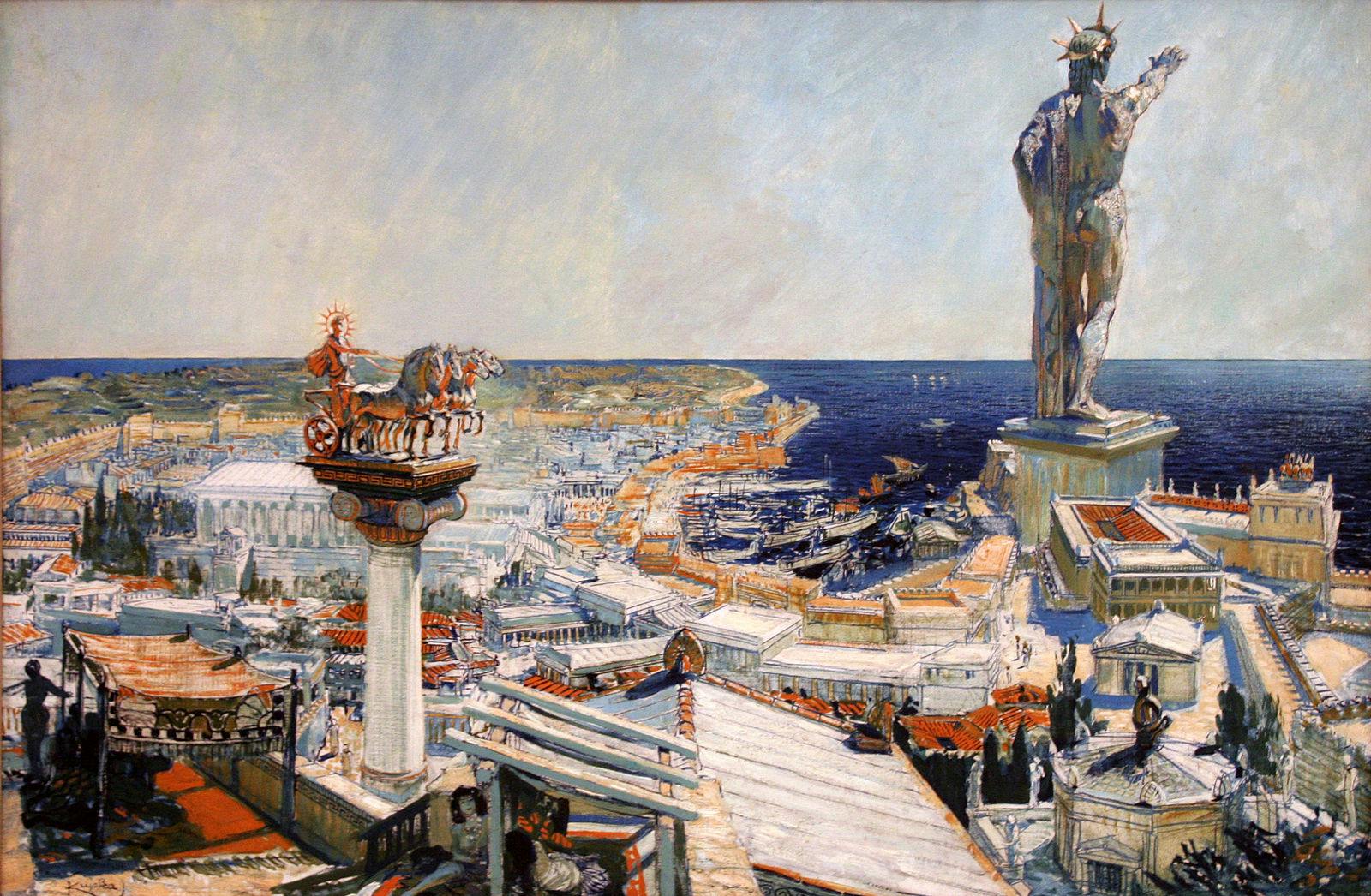The Colossus of Rhodes, one of the wonders of the ancient world.
The ancient Greeks created great buildings that still amaze us today. One of them is found on the Island of Rhodes (Greece), it is one of the largest statues ever built in the ancient world, a challenge for architecture in those times.
The colossus stood in the Bay of Rhodes and stood for almost 60 years. The story begins with the attack on the city by Demetrius I of Macedonia, famous for his sieges to cities. Among them, the siege of the city of Rhodes stands out, which turned out to be a defeat that was not expected. The people from Rodhes, proud of their victory, built a large statue to celebrate it, known as "The Colossus of Rhodes."
There are several theories about where the statue was located, some suggestions that it was located at the entrance to the port with each leg located at one end of each pier (as the image shows), thus welcoming the ships that passed between its legs. But this theory is difficult to believe for many experts since the statue was not too big to join the two arms of the springs, because they were quite far apart.

More recent research places the Colossus on the hill behind the bay, where today a medieval castle stands. Near this castle are the remains of an ancient sanctuary of King Helios, which makes us think that this theory is the most correct.
Regarding the structure of the Colossus, it was made of a wooden skeleton that served as a support for the bronze plates. The total weight of these bronze plates was around 200 tons. Assembling the plates took the Rodians 12 years. With all this material a stone structure was required at his feet to support this weight. The height was around 35-40 meters high, something similar to the Christ the Redeemer of Rio de Janeiro.
Today it is not known exactly where the remains are. The statue lasted just over half a century, and in 226 BC it was destroyed by an earthquake. The Roman writer and soldier Gaius Pliny Secundo described that the statue after collapsing remained on the ground for another 800 years, still astonished visitors who saw the Colossus.
The end of the Colossus comes with the conquest of Rhodes by Muawiya ibn Abi Sufyan, who according to the chronicles of Theophanes the Confessor, the remains of the statue were collected and melted down for sale.


